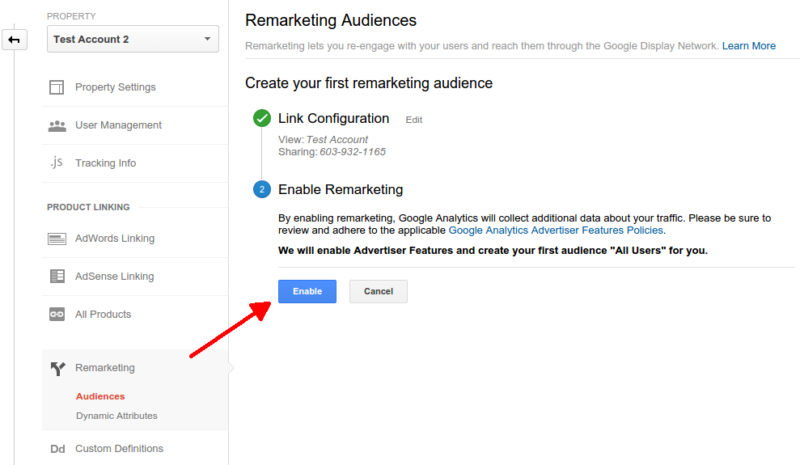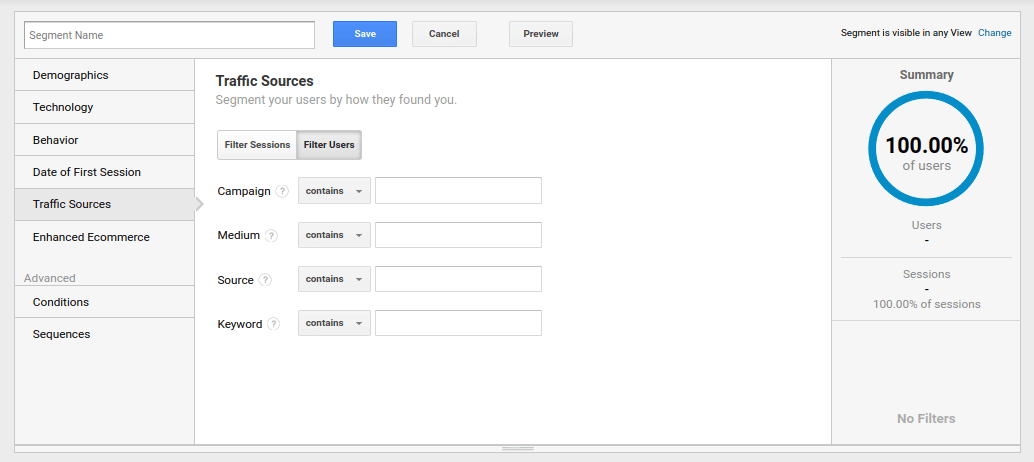Unlocking Remarketing in Google Analytics: Increase Your Conversion Fees
The art exists in calculated audience segmentation and crafting engaging advertisement web content that resonates with users. The key to opening the full possibility of remarketing exists in recognizing customer behavior and interests to optimize ROI.
Recognizing Remarketing in Google Analytics
Remarketing in Google Analytics is an effective tool that enables companies to target and re-engage with individuals who have formerly interacted with their web site or app. By utilizing this attribute, companies can display targeted ads to customers as they browse the internet or make use of other apps, reminding them of services or items they previously checked out. This strategic technique helps organizations remain top-of-mind with potential clients, boosting the probability of conversion.
One secret aspect of remarketing in Google Analytics is the capacity to produce personalized target market lists based upon specific standards such as pages checked out, actions taken on the site, or group info. These checklists permit services to tailor their remarketing campaigns to different sectors of their target market, making sure that the appropriate message gets to the ideal people at the correct time.
In addition, remarketing in Google Analytics provides beneficial insights into individual habits and the performance of advertising campaigns. By tracking customer interactions and conversions, companies can improve their strategies to enhance targeting and maximize ROI. Overall, comprehending the details of remarketing in Google Analytics is vital for businesses looking to improve conversion prices and drive development.
Establishing Remarketing Lists
When applying remarketing approaches in Google Analytics, the first action entails producing personalized audience checklists customized to certain standards. Next off, click on the +New Audience switch and choose the type of target market you want to develop, such as individuals that went to a specific web page or finished a specific action. You can further improve your audience by including details problems and parameters to guarantee you get to the ideal individuals with your remarketing campaigns.

Crafting Compelling Remarketing Ads
Crafting engaging remarketing advertisements includes purposefully creating messages that resonate with your target market and drive them to take wanted actions. To develop effective ads, it's necessary to understand your target market's preferences, habits, and requirements. Customization is type in remarketing ads, so consider making use of dynamic advertisements that reveal services or products that a customer has formerly seen on your internet site. This tailored approach can dramatically enhance involvement and conversions.
In enhancement to customization, engaging advertisement duplicate is critical. Including incentives like discounts or limited-time deals can additionally help boost click-through prices.
A visually appealing ad is more likely to get the target market's attention and drive them to review your internet site. By integrating personalization, influential duplicate, and appealing visuals, you can create remarketing advertisements that successfully re-engage individuals and boost your conversion prices.
Studying Remarketing Performance

Click-through prices (CTRs) indicate the percentage of individuals who clicked on the advertisement after seeing it. A high CTR symbolizes that the ad is engaging and appropriate to customers. Conversion prices expose the percentage of customers that completed a preferred activity, such as signing or making a purchase up for a newsletter, after clicking like this the advertisement. Reviewing the price per acquisition helps in comprehending the costs sustained to get a consumer via remarketing. Return on advertisement invest (ROAS) measures the revenue produced for every single dollar invested in advertising and marketing, indicating the profitability of the campaign. By analyzing these efficiency metrics, online marketers can determine locations for improvement and improve their remarketing strategies to improve conversion prices and overall project success.
Enhancing Remarketing Techniques

Moreover, optimizing remarketing strategies entails segmenting target markets based on different requirements such as demographics, behavior, and interests - What Is “Remarketing” In Google Analytics?. By creating targeted advertisements that resonate with each section, marketers can enhance the chance of re-engaging customers and driving conversions.
Continual tracking and optimization of remarketing projects based upon real-time data and insights are crucial for making the most of ROI and improving conversion rates. By carrying out a data-driven method and refining techniques based upon efficiency metrics, marketers can unlock the full capacity of remarketing in Google Analytics.
Verdict
Finally, utilizing the power of remarketing in Google Analytics can dramatically enhance conversion rates by re-engaging with previous web site site visitors with customized advertisements. By producing customized audience listings, crafting compelling ads, assessing performance metrics, and continually enhancing approaches, services can maximize ROI in remarketing projects. This data-driven technique ensures that advertising efforts are targeted and efficient in driving individual interaction and eventually increasing conversions.
In general, understanding the intricacies of remarketing in Google Analytics is essential for businesses looking to enhance conversion prices and drive development.
You can even more improve your audience by including certain conditions and parameters to ensure you reach the best individuals with your remarketing projects.
By incorporating customization, influential copy, and eye-catching visuals, you can develop remarketing ads that effectively re-engage customers and improve your conversion rates.
By assessing these performance metrics, marketers can identify areas for enhancement and improve their remarketing strategies to improve conversion prices and total project success.
In conclusion, taking advantage look these up of the power of remarketing in Google Analytics can dramatically boost conversion rates by re-engaging with previous web site visitors via tailored Recommended Site advertisements.